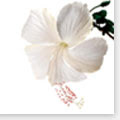Tuesday, January 18, 2022
Friday, December 7, 2007
Diabetes - Ayurvedic view :

According to Ayurveda, a holistic alternative medical science, the main cause of diabetes are fat, urine, and Kapha buildups due to foods, liquids, lifestyle, stress and others
It generally believes that any disease caused is due to doshic imbalance. The doshas are the three humors that govern the human body, they are vata, pitta and kapha. It includes diabetes in the prameha category, which are a list of urinary disorders especially characterized by profuse urination with several abnormal qualities.
Classical Ayurvedic therapy for madhumeha (diabetes) begins with an assessment of the dosha imbalance. In all types of pramehas (urinary disorders), kapha is vitiated, but in madhumeha, vata is often aggravated as well. Therefore, therapies will be directed at both vata and kapha simultaneously to restore the balance of the doshas.
By determining the causal imbalances at the basis of a disorder, an Ayurveda evaluation strikes the root causes of diabetes which are Overeating and consequent obesity, Excessive intake of sugar and refined carbohydrates, Overloading of proteins and fats which get converted into sugar if taken in excess, Excessive tension, worry, anxiety & grief, Hereditary factors.
Common ayurveda remedies include : a) Diet restrictions -Avoid foods that increase kapha dosha like potatoes, rice, sugar, fatty foods and avoiding alcohol. b) Exercise – Regular physical exercise is a must for diabetics. Practising yogic asanas like ‘Halasan’, ‘Paschimottanasan” are found effective.c) Panchakarma Therapy - The greatest benefit of Panchakarma is that it reduces the insulin resistance in the tissues in diabetics which is the primary goal in treating the diabetes.
i.e., Ayurveda also addresses the diet modification by eliminating sugar and simple carbohydrates, and emphasizing complex carbohydrates. Protein is limited, as excessive intake can damage the kidneys. Fat is also limited because there is often a deficiency of pancreatic enzymes, making fat digestion difficult. Since many diabetics have autoantibodies, Panchakarma is typically used for this cleansing the same. This begins with herbal massages and an herbal steam sauna, followed by fasting to cleanse the body. This is followed by an herbal purge for the liver, pancreas, and spleen. Colon therapy is next, first to cleanse the digestive tract and then to reconstitute the system.
Hyponidd- Best choice for NIDDM

Indications
1) Border line diabetes, [Impaired Glucose Tolerance (IGT) and Impaired Fasting Glucose (IFG)]2) As an adjunct therapy with existing hypoglycemic agents in secondary OHAs failure cases to prevent further complications.3) In PCOS (Polycystic Ovarian Syndrome) in women leading to menstrual disorders and infertility.
Dosage
Tablet : General: Two tablets twice a day, half an-hour before meals for IGT, IFG and PCOS.In patients on other oral hypoglycemic drugs (OHAs) one tablet twice a day may be added initially for a week. Once satisfactory response is achieved, the dosage of OHAs may be slowlyreduced and the dosage of Hyponidd to be increased to two tablets twice a day.
Benefits
1) No clinical hypoglycemia unlike suphonylureas. 2) Lowers the lipid levels & protects against cardiovasular diseases. 3) Provides a sense of well-being and feeling of less tired and less fatigue 4) No need to add antioxidants as it contains natural antioxidants and rejuvenators. 5) Delays the diabetic complications – Impotency in male, neuropathy and retinopathy. 6) Cost effective for long-term use. 7) Improves quality of life and restores libido.
DO'S AND DON'TS
Do's 1) Regular exercise is recommended – Evening or morning walk and reduce 2) Consumption of vegetables preferred – Karela and Drumsticks3) Do check fasting and post lunch blood glucose at least once a week.4) Strictly follow doctors drug regimen and diet.5) Drink atleast 8 – 10 glasses of water daily.Don'ts 1) Avoid injury /cut2) Reduce alcohol consumption and smoking.3) Avoid oily and spicy food, sweets,and honey.4) Avoid excessive physical and psychological stress.
Subscribe to:
Posts (Atom)
